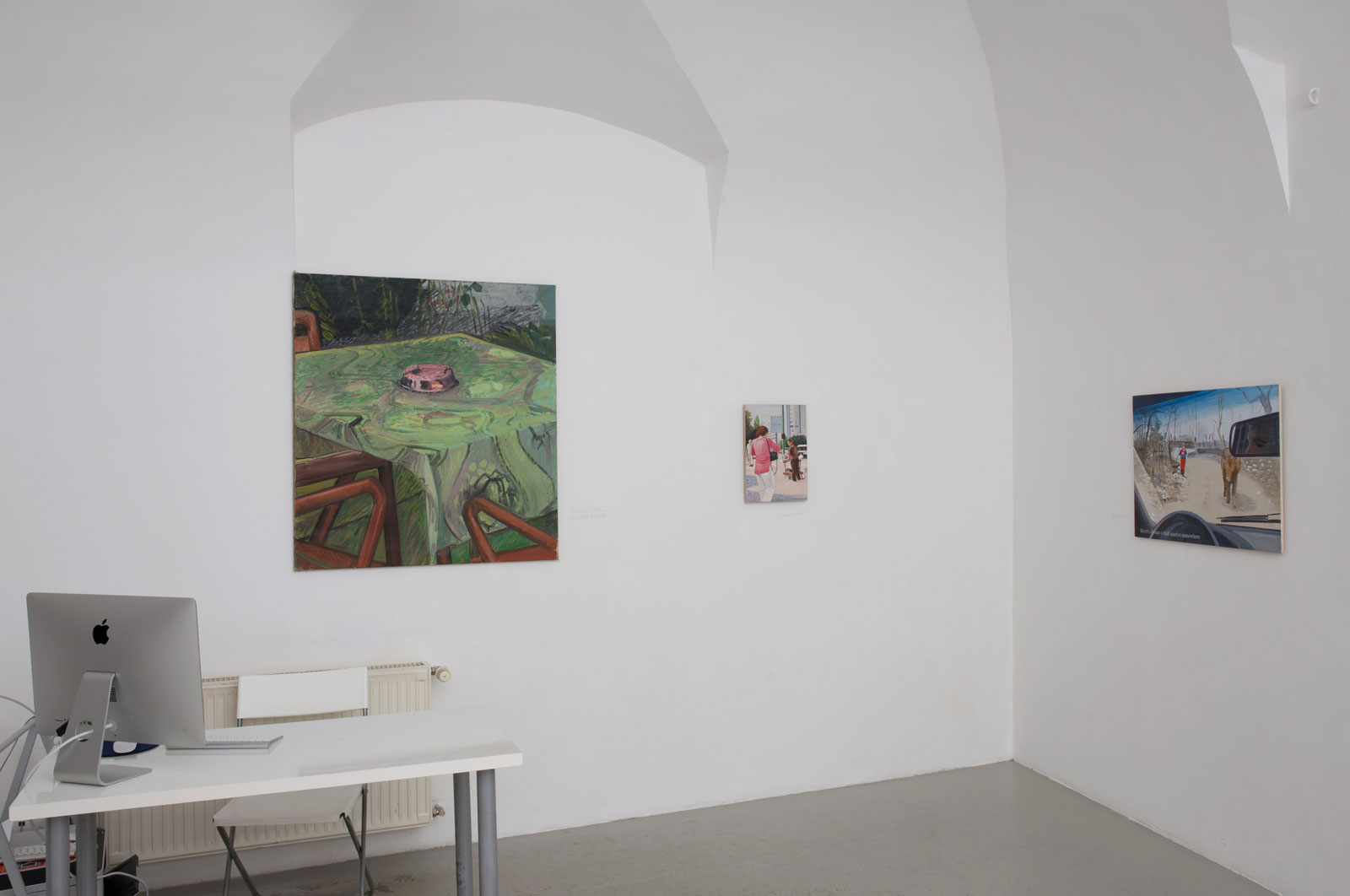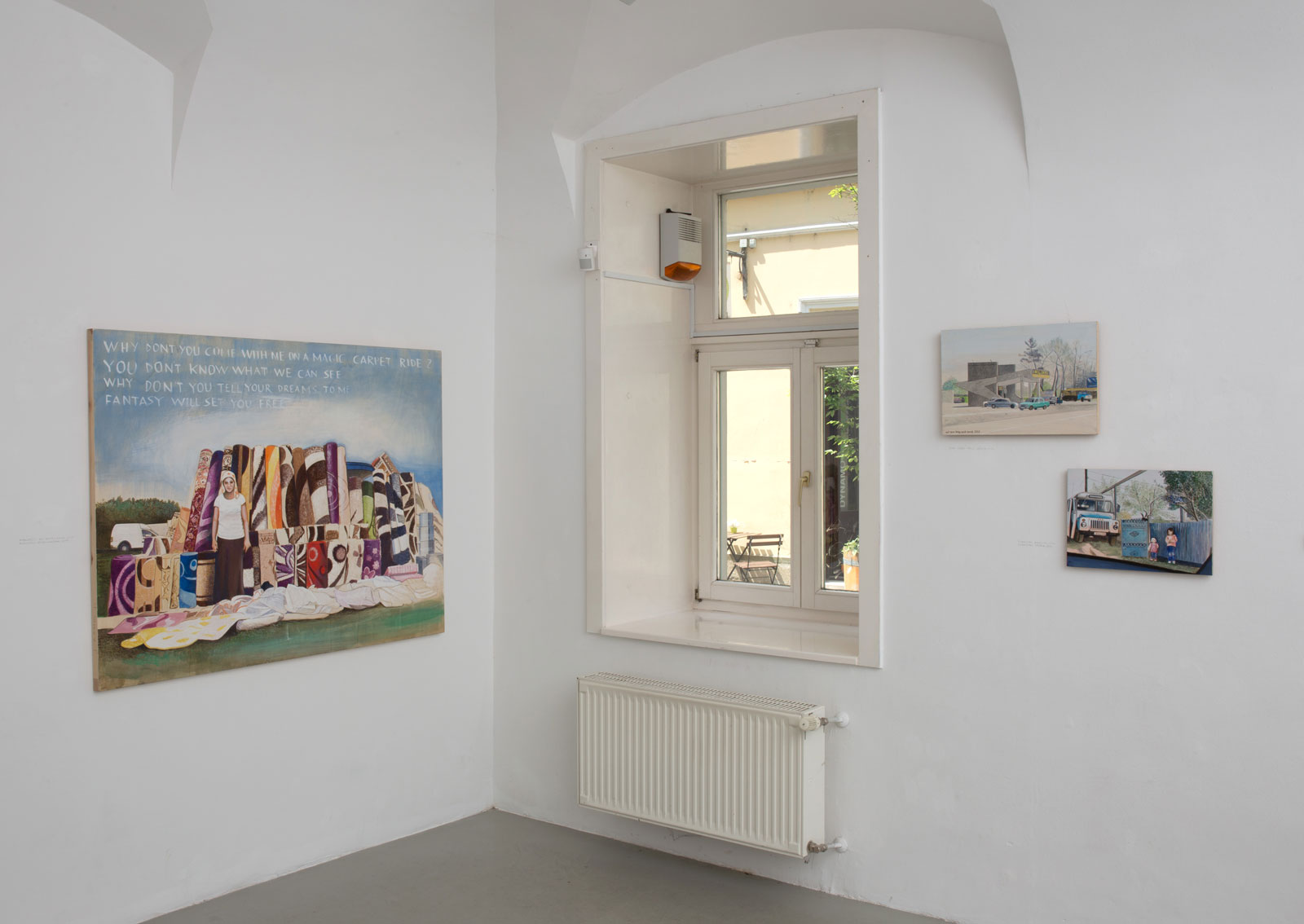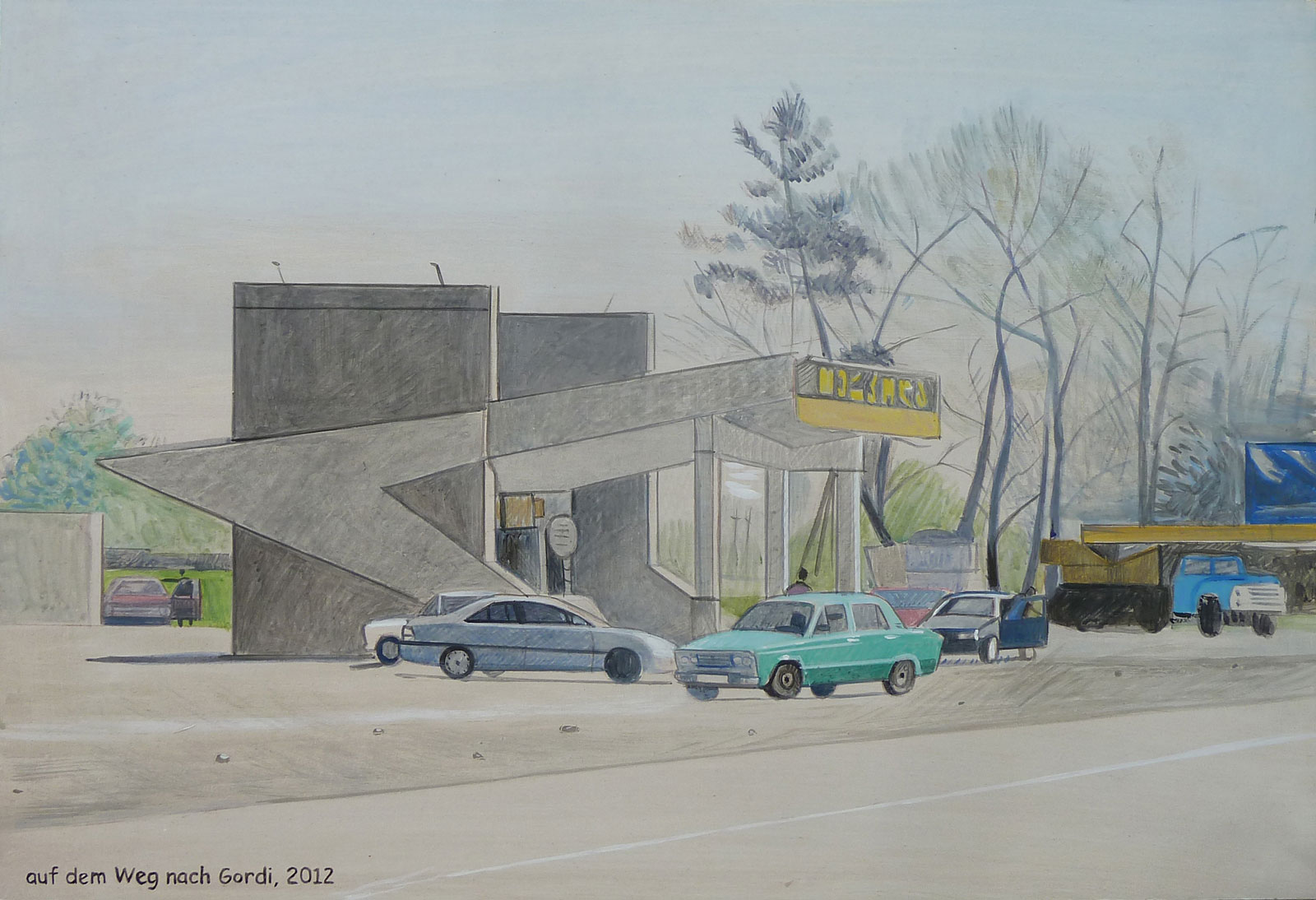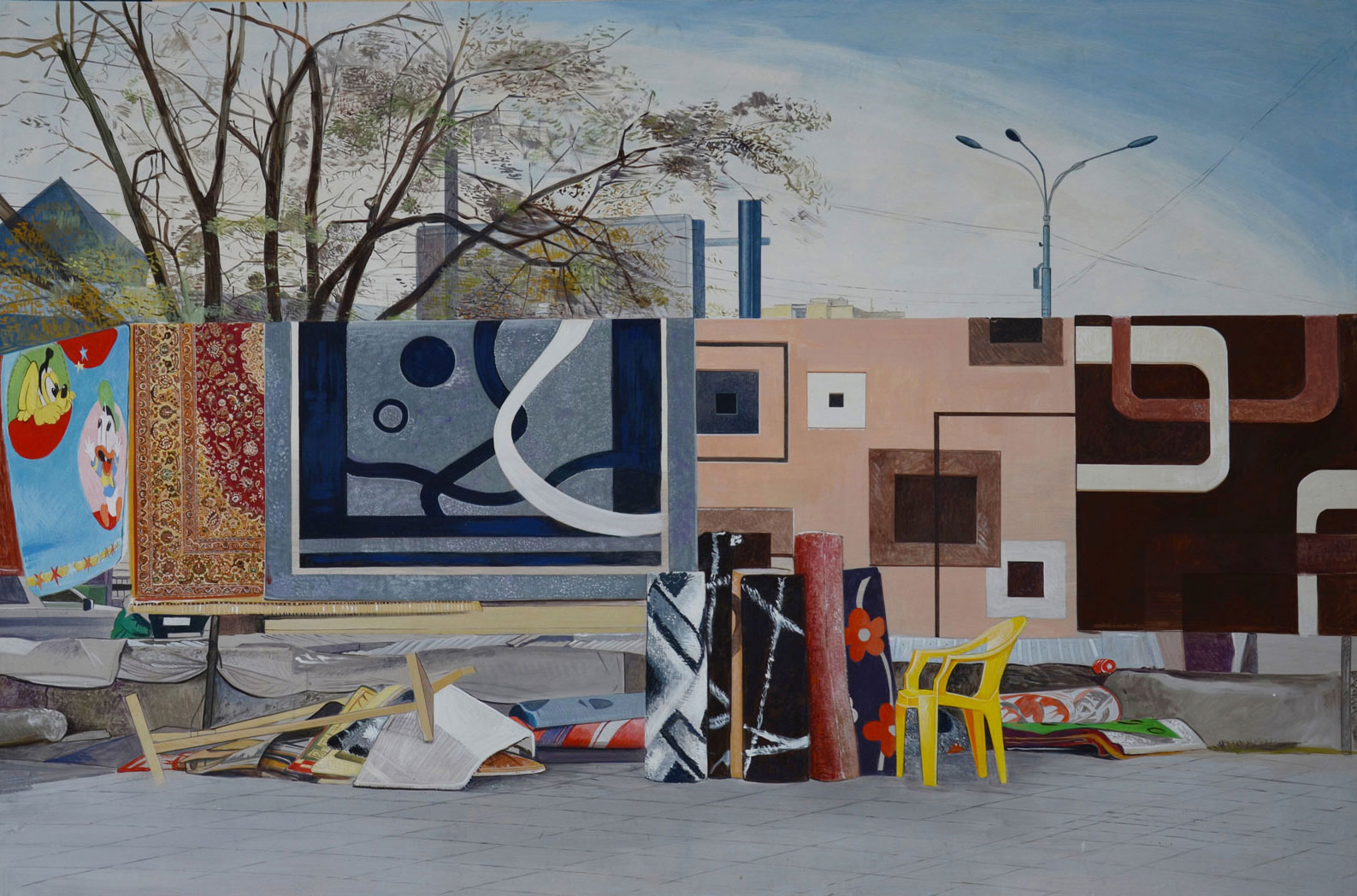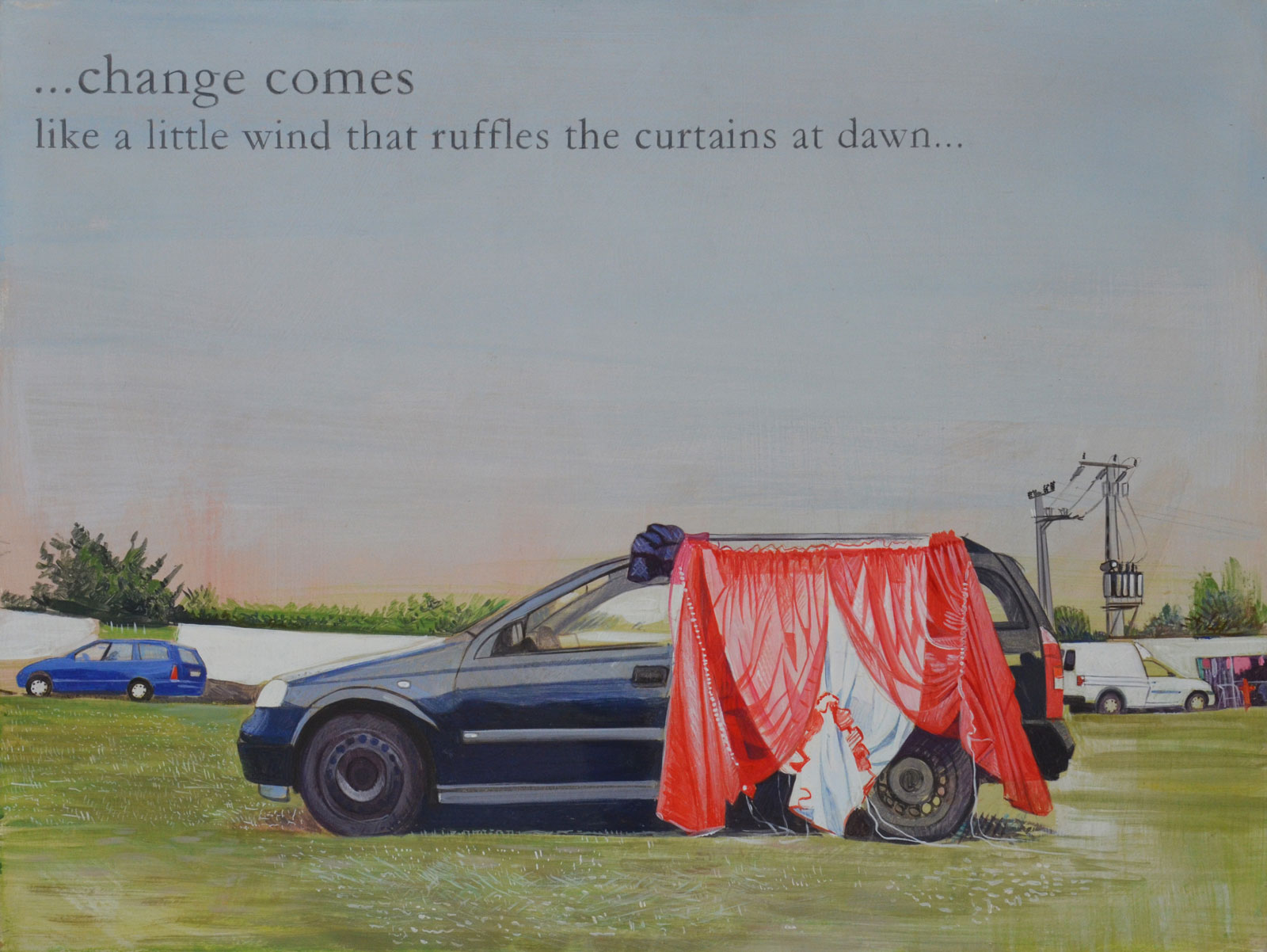Johanna Kandl’s paintings prompt me to reflect on two questions: one is the theory of the radically extended concept of design through the prism of the everyday lives of market traders, while the other is the legacy of modernism in the visual culture of the 21st century.
Johanna needs no introduction in Hungary. She is an artist who has consistently examined the development of post-socialist countries since the change of regime, paying particular attention to economic changes. She is interested in the relationship between the two economic systems of the 20th century, capitalism and socialism, and the dominance of the former. To her mind it is an illusion that the change of regime brought us free trade and the possibility of entrepreneurship. Capitalism is heavily criticised in the western countries, and many do not agree with Fukuyama’s claim that capitalism is the most developed of the possible economic systems if only because it gives the individual the right to free entrepreneurship on the basis of democracy. Without even looking to the criticisms of French contemporary philosophy, but simply to Thomas Piketty’s Capital in the Twenty-First Century or Samuel P. Huntington’s The Clash of Civilizations and the Remaking of World Order, we can toy with the idea that capitalism is one of the last bastions of the universal ideology of 20th century modernism – though it rests on solid foundations, it is not unshakable. Johanna’s textual commentaries on her pictures likewise explore that question, and as an artist she believes that she can change viewers’ way of looking at the world.
The broadened understanding of design, according to which design manifests itself not just in objects or our surroundings, but in all human activities, greatly appeals to me. It means that our behaviour, our way of talking, the products we choose, the music we listen to, the films we watch and the newspapers and books we read are all the result of a design choice. That has anthropological and sociological consequences: not only those people who methodologically select high-quality items and are willing to spend money on their clothes, surroundings and food and drink (as well as works of art) exhibit an awareness of design, but also those who do the opposite and apparently randomly accumulate cheap and poor-quality items, because they also establish a typical environment that is indicative of their social status, way of living, struggles and needs.
The markets that have sprung up in the post-socialist countries – and are frequent themes in Johanna Kandl’s work – are not just the “offspring” of capitalism, however. It is true that the change of regime gave rise to the free exchange of goods, but the story of the “Polish markets” of the ’80s leads us right back to the model of the farming community that sold its surplus goods at countryside markets in the Middle Ages. That historical thread is far-reaching. What is new in market history from the ’80s onwards is the impact of urbanisation and, related to that, the appearance of those home decor items that reinforce the provincial dimensions of the urban lifestyle, such as abstract rugs, multifunctional textiles and materials with modern patterns. If you are already familiar with Johanna Kandl’s work, you will perhaps sense that my remarks are intended to show what the cultural environment created by market traders and modernism have in common.
As we come to the closure of this opening talk, we should recognise that the people depicted in this series create their own design environment according to their personal interpretation. While it may be lacking in taste from our perspective, from their point of view it is modern and inevitable in the sense that it is based on the visual legacy produced by the 20th century. Allow me to read the manifesto-like “Foreword” of the magazine “de Stijl” from June 1917 in order to evoke the beginnings of the modernist approach.
“This periodical sets out to contribute to the development of a new sense of beauty. It wishes to make modern man receptive to everything that is new in the visual arts. It seeks to establish the key principles of a maturing style that is based upon observation of the present schools of artistic thought and means of expression, as opposed to archaic confusion and the “modern baroque”. It aims to combine and coordinate those schools of modern plastic art which, though fundamentally similar, have developed independently from one another.
The editors wish to achieve that aim by providing a platform to all those genuinely modern artists who can contribute to reforming the aesthetic sense and raise awareness of the visual arts. Where the general public has not yet been touched by the new plastic aesthetic, it becomes the duty of the expert to awaken the layman’s awareness of aesthetics. The truly modern, i.e. conscious artist has a twofold mission: first, to create purely plastic works of art, and, second, to instil an appreciation of such purely plastic art in the public. For this reason, such a periodical has become indispensable …” (In: Mario de Micheli: Az avantgardizmus [Avant-gardism], Képzőművészeti Alap Kiadóvállalat, 1978, p.: 380)
What we can take from the passage I have just read out is that the first theory-based representatives of abstract art regarded education as essential to wide-scale dissemination of the new artistic principles and to changing public thinking and public taste. It is perhaps a good thing that Teo van Doesburg and Vilmos Huszár cannot see Johanna Kandl’s on-the-ground photos, which formed the basis for her paintings, because they would have been struck, first, by the fact that modernism has become popularised and abstract art has become a form of home decor, losing its lofty elitism, and, second, that society did not only fail to catch up in the past 100 years by means of education, but has become even more fragmented and segmented as a result of material and cultural differences.
Johanna is striving for widespread recognition of that fact. She still believes in education and the ability for artistic messages to be conveyed. We also believe in those aims, which is why we are here, why we put on exhibitions and why we view our colleagues’ works. I therefore encourage you to contemplate Johanna’s works, and wish her great success and similar projects in the future too.
Without further ado, I declare the exhibition open.
Zsolt Petrányi
